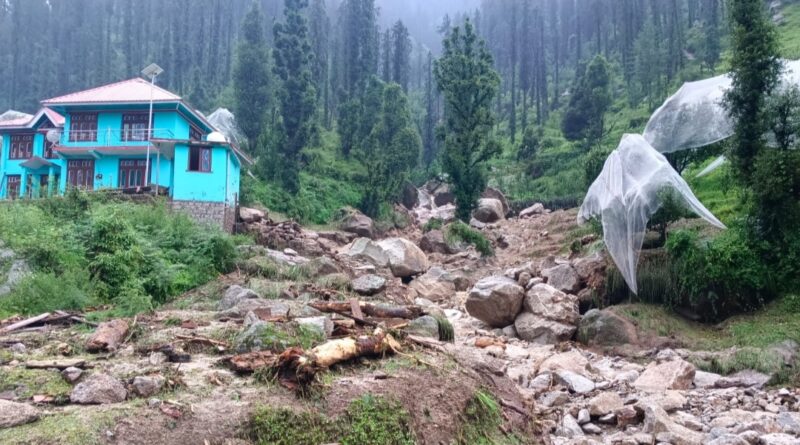Progress at What Cost? Seraj’s Tragic Wake-Up Call After Nature Strikes Back
How Himachal’s Once-Forgotten Valley Paid the Price for Breakneck Development
The rain began like any other monsoon night in Seraj. Farmers returned from their fields, children finished homework by lantern light, and the valley settled into its evening rhythm. Then, at midnight, the mountains roared.
“What sounded like thunder was actually our world crumbling,” recalls Mahender Kumar from Pakhrair village, his voice breaking. “By dawn, our farms were gone—just rivers of mud where my apple trees once stood.”
A Valley Transformed—Then Devastated
Seraj block, once among Mandi district’s most isolated regions, saw unprecedented development over the past decade. Roads snaked through remote villages, bringing electricity, schools, and hope. But on June 30, nature sent a brutal invoice for that progress.
As cloudbursts unleashed 1,900% excess rainfall in 24 hours, the valley became a disaster zone:
- 11 lives lost in Pakhrair alone
- 200 villages impacted across 36 panchayats
- Student exodus from Thunag’s horticulture university as dorms flooded
- 45 homes buried under debris in Bung Rail
The Human Face of the Catastrophe
In Thunag market, a woman stares at the wreckage of her dairy cooperative—the pride of her self-help group. “First drought, then hailstorms, now this,” she says, kicking at a broken milk canister. “Our cows survived, but with roads gone, how will we sell?”
Nearby, young shopkeeper surveys what’s left of her general store—flattened for the third time since 2021. Her family’s last 2 bighas of farmland vanished in the sludge. “They promised development would help people like us,” she whispers. “Instead, we’ve lost everything it brought.”
Development or Destruction? The Uncomfortable Truth
Locals point to alarming patterns:
- Roads to Nowhere: Over 300 hastily built highways disrupted natural drainage
- Herbicide Havoc: Glyphosate overuse may have weakened hillsides
- Deity or Data? While elders blame “Shikari Mata’s wrath,” youth demand scientific accountability
“Every landslide follows a new road alignment,” claims an NGO worker, showing photos of collapsed retaining walls. “Contractors dumped muck into streams—we warned them for years.”
A Glimpse of What Was Lost
Before the Deluge:
✅ Thriving apple & vegetable economy
✅ Women-led dairy cooperatives
✅ New generational mobility (first college-goers)
Aftermath:
❌ 80% farmland in Bung Rail vanished
❌ 15 villages now “uninhabitable” per govt survey
❌ Trauma-driven youth exodus
The Road Ahead: Compensation or Change?
As JCBs claw through debris, hard questions remain:
- Will ₹10 crore relief funds reach farmer families?
- Can “green infrastructure” replace reckless construction?
- Will this disaster finally trigger scientific land-use planning?
“Compensation won’t revive our topsoil,” says a local, sifting mud through his fingers. “We need development that listens to the mountains—not just election cycles.”
EYEWITNESS ACCOUNT
“That night, we carried disabled neighbors on our backs through chest-high water. Today, their homes are graves under that landslide.”
— A volunteer rescuer
This isn’t just a climate disaster—it’s a failure of imagination. The Himalayas gave warnings for years. Now, Seraj writes the textbook on what happens when we ignore them.
( Manshi Asher is a Himachal Based Environment Activist & Researcher )



